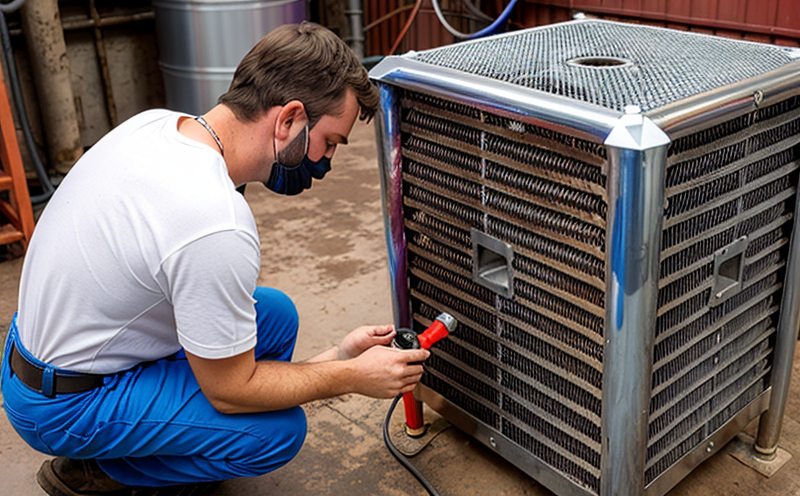Heat exchanger gasket inspection
The integrity of heat exchangers in industrial applications cannot be overstated. They are critical components that ensure efficient heat transfer, which is essential for maintaining optimal operational conditions and ensuring product quality. Heat exchanger gaskets play a pivotal role in this efficiency by sealing the fluid paths between plates or tubes.
Gasket failure can lead to significant operational disruptions, environmental hazards, and costly downtime. Therefore, regular inspection of heat exchanger gaskets is crucial for maintaining safety standards and ensuring compliance with international regulations. This process involves several steps including visual inspections, pressure tests, and sometimes destructive testing if suspect areas are identified.
For quality managers and compliance officers, understanding the specific requirements for inspecting these components can help in making informed decisions about maintenance schedules and potential replacements. R&D engineers benefit from this knowledge as well since they might need to innovate solutions that enhance gasket performance or durability. Procurement teams will find value here too because selecting appropriate suppliers who meet stringent inspection criteria is a key factor.
International standards such as ISO 15297:2006 provide guidelines for the design, manufacture, and testing of heat exchangers including their gaskets. Compliance with these standards ensures that inspections are conducted consistently across different geographical locations ensuring reliability and safety.
Destructive testing may be employed when visual inspection or non-destructive methods indicate potential flaws. This involves physically removing a sample from the component to examine it under controlled laboratory conditions using advanced microscopy techniques or other analytical instruments.
Non-destructive testing (NDT) includes radiography, ultrasonic testing, and eddy current testing among others. These methods allow for detailed examination without causing damage to the gasket itself. Ultrasonics can detect internal flaws while radiographic imaging provides a visual representation of any imperfections.
- Visual Inspection: Checking visible signs of wear or damage
- Infrared Thermography: Detecting temperature variations indicative of leaks
- Hydrostatic Testing: Applying water pressure to check for leaks under controlled conditions
Why It Matters
The importance of proper heat exchanger gasket inspection cannot be understated. These components are integral parts of numerous industries ranging from chemical processing plants to pharmaceutical manufacturing facilities. Any failure within these systems can result in safety hazards, environmental contamination, and substantial financial losses due to production downtime or product recalls.
Compliance with relevant international standards is mandatory for many organizations operating under stringent regulatory frameworks. Non-compliance could lead to legal penalties, reputational damage, and loss of market share. Regular inspections not only prevent such issues but also contribute positively towards corporate social responsibility goals by promoting safer workplaces and sustainable practices.
From a cost perspective, preventing failures through timely inspections saves money in the long run as it avoids expensive repairs or replacements. Additionally, maintaining high levels of reliability enhances customer satisfaction and loyalty which translates into better business outcomes over time.
Eurolab Advantages
Eurolab offers comprehensive heat exchanger gasket inspection services tailored to meet the unique needs of various industries. Our team comprises highly skilled professionals equipped with state-of-the-art equipment capable of performing precise and accurate tests.
We employ a multi-faceted approach encompassing both non-destructive testing methods as well destructive sampling when necessary. This ensures comprehensive coverage across all potential areas of concern, thereby reducing the risk of overlooking critical issues.
Our laboratories adhere strictly to international standards like ISO 15297 ensuring consistency and reliability in our results. By leveraging these global benchmarks, we guarantee that our findings align with regulatory expectations worldwide.
Clients appreciate Eurolab’s commitment to delivering timely reports accompanied by detailed recommendations for necessary actions based on inspection outcomes. This proactive stance helps clients stay ahead of potential problems before they escalate into major issues requiring extensive intervention.
International Acceptance and Recognition
EuroLab's heat exchanger gasket inspection services are recognized worldwide due to strict adherence to international standards such as ISO, ASTM, EN, IEC, etc. Our inspections are widely accepted across Europe, North America, Asia-Pacific regions and beyond.
- American Society for Testing and Materials (ASTM)
- European Committee for Standardization (CEN/ISO)
- International Electrotechnical Commission (IEC)





